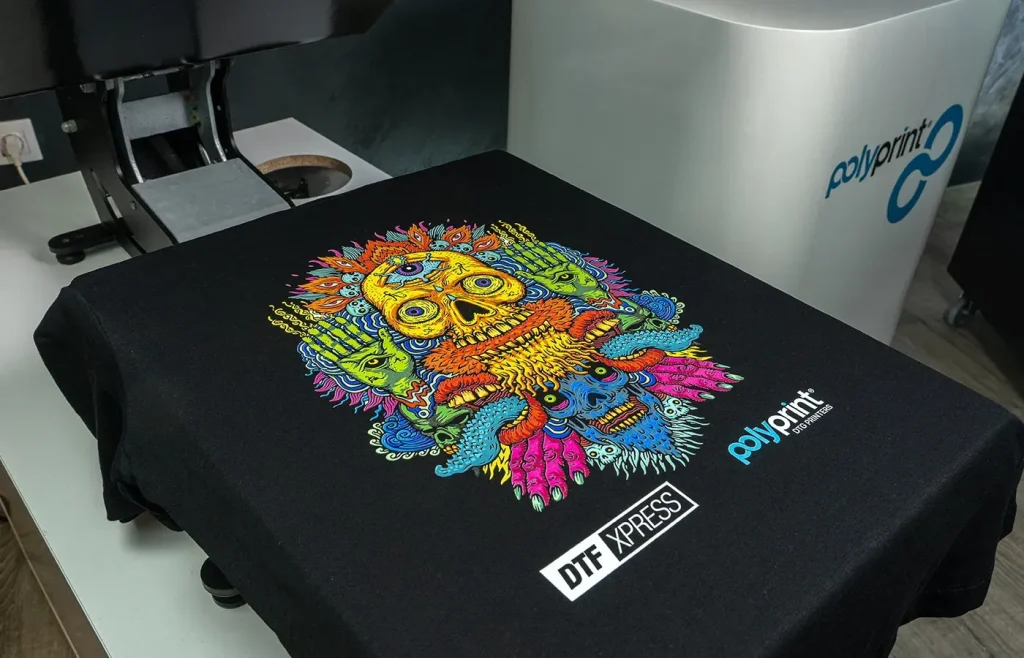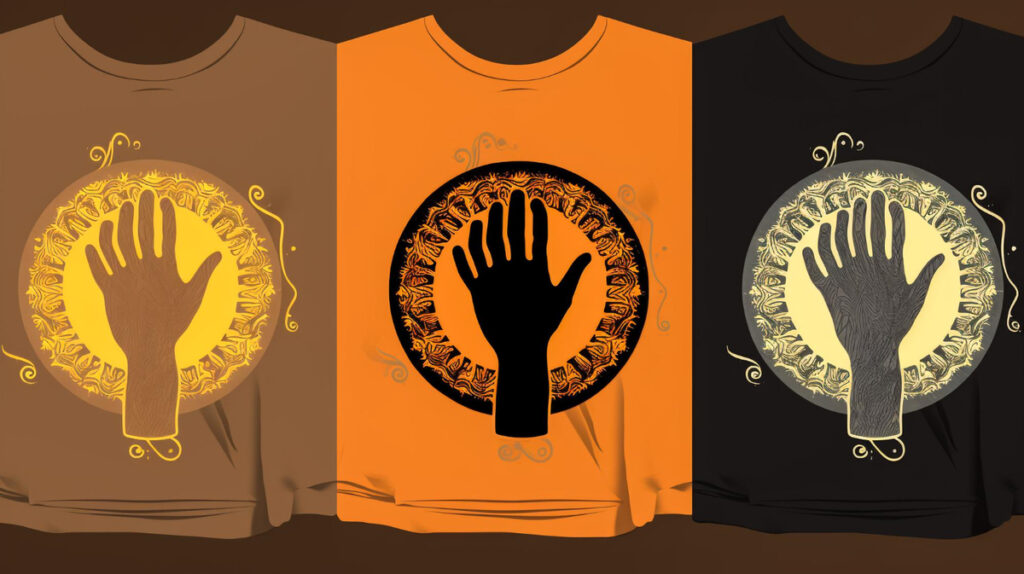In the ever-evolving realm of custom apparel, DTF printing has emerged as a revolutionary option for businesses seeking high-quality prints with vibrant colors and intricate details. Direct to Film (DTF) printing allows for a seamless application of designs onto various fabrics, making it an exceptional choice for creating custom gear that stands out. With the significant advantages of ease of use and cost efficiency, especially for small runs, DTF has positioned itself as a preferred printing method. This innovative technology not only rivals traditional screen printing but also provides versatility across materials, paving the way for diverse product offerings. As we delve deeper into the benefits of DTF printing, it becomes clear why it’s gaining traction in the custom apparel industry in 2023.
The introduction of techniques like direct to film printing signifies a transformative shift in the custom apparel landscape. This modern approach, often referred to as DTF or direct-to-film, streamlines the printing process and produces eye-catching designs on a variety of fabrics. Consumers are increasingly drawn to the quality and durability that these methods offer, prompting a comparison between DTF vs screen printing due to its unique advantages. With the ability to deliver high-quality prints and the flexibility to work with different materials, businesses are leveraging this technology to meet diverse customer demands effectively. The rise of eco-friendly water-based inks in DTF printing further enhances its appeal, catering to the growing market of environmentally-conscious shoppers.
Understanding DTF Printing and Its Process
Direct to Film (DTF) printing is revolutionizing the custom apparel industry. This innovative method utilizes a special transfer film on which designs are printed. The film is then heat-pressed onto fabric, allowing vibrant colors and intricate details to come through with exceptional clarity. This technology is not only capable of delivering stunning visuals but also ensures the longevity of prints, making it a preferred choice among designers and businesses alike.
The DTF printing process is straightforward yet sophisticated. It begins with the creation of a digital design, which is printed onto the transfer film using eco-friendly inks. Once printed, an adhesive is applied to the inked side of the film, followed by curing to enhance adhesion during heat application. This efficient method results in high-quality prints that stand the test of time, offering apparel makers a seamless approach to realizing their creative visions.
Advantages of DTF Printing for Custom Apparel
DTF printing brings a multitude of advantages to the table, particularly when it comes to custom apparel. For one, it outperforms traditional methods like screen printing in versatility, allowing designs to be applied to a variety of fabrics, including cotton, polyester, and blends. This capability opens up exciting avenues for businesses to diversify their offerings, catering to varying customer needs while ensuring consistent quality across all products.
In addition to its material versatility, DTF printing also excels in delivering high-quality prints. The use of water-based inks not only ensures a soft feel but also produces eye-catching graphics with vibrancy and detail. Whether it’s intricate patterns or simple logos, DTF makes it possible to achieve stunning results that captivate consumers. Thus, businesses looking to establish themselves in the competitive custom apparel market can leverage these advantages to stand out.
Cost Efficiency in DTF Printing for Small Businesses
Cost efficiency is paramount for small businesses venturing into the custom apparel space, and DTF printing presents a solution. Unlike traditional screen printing that may involve hefty setup fees for small batches, DTF simplifies this process. This technology requires minimal upfront investment, enabling entrepreneurs to test designs and make informed decisions without succumbing to high initial costs. As a result, DTF printing democratizes access to quality apparel production for small and emerging brands.
Furthermore, DTF’s ability to handle small runs economically encourages experimentation and design diversity. This flexibility means that businesses can pivot their offerings based on customer feedback, trial new trends, or even capitalize on seasonal demands without the risk of overproduction. Such adaptability is crucial in today’s fast-paced fashion industry, making DTF an invaluable ally for burgeoning enterprises.
DTF vs. Screen Printing: A Comparative Analysis
When exploring printing options for custom apparel, the debate of DTF vs. screen printing is often at the forefront. Each method has its merits, but DTF printing consistently showcases advantages that cater to modern business needs. While screen printing excels in large production runs, it is less efficient and cost-effective for smaller batches due to setup requirements and time-consuming processes.
In contrast, DTF printing simplifies the workflow while maintaining the ability to produce high-quality, vibrant designs. DTF can easily facilitate personalization, which is increasingly in demand in the custom apparel market. As consumers gravitate towards unique, one-of-a-kind items, DTF aligns perfectly with these preferences, allowing businesses to cater to a more diverse customer base.
Durability and Longevity of DTF Prints
Durability is a critical factor for customers investing in custom apparel, and DTF printing rises to the occasion. DTF prints are renowned for their resilience, retaining their vivid colors and intricate details over time and through multiple washes. This longevity assures businesses that their customers will not experience premature fading or cracking, which can often undermine consumer satisfaction and brand loyalty.
Moreover, the bonding between DTF inks and fabric fibers is engineered for strength, ensuring that these prints withstand the rigors of daily use. For a business, this means fewer returns and exchanges due to print defects, translating into improved operational efficiency. As a result, companies opting for DTF printing can confidently market their products as high-quality and long-lasting, further enhancing their brand reputation.
Environmental Benefits of DTF Printing
In today’s eco-conscious market, sustainability plays a vital role in consumer choices, and DTF printing demonstrates a commitment to environmental responsibility. Many DTF inks are water-based, making them significantly less harmful compared to the solvent-based inks often found in traditional screen printing. This eco-friendliness attracts consumers looking to support brands that prioritize sustainability, giving businesses a competitive edge.
Additionally, the efficiency of DTF printing contributes to reduced waste in production processes. The ability to print precisely what is needed for orders means less overproduction and fewer unsold garments ending up in landfills. By integrating DTF technology into their production methods, companies not only reduce their ecological footprint but also align their business practices with the values of their target audience, fostering a positive brand image.
Frequently Asked Questions
What are the main advantages of DTF printing for custom apparel?
DTF printing offers several significant advantages for custom apparel, including high-quality prints with vibrant colors, material versatility allowing application on various fabrics, cost efficiency particularly for small runs, ease of use compared to traditional methods, excellent durability that resists fading and cracking, and its eco-friendliness thanks to water-based inks.
How does DTF printing compare to screen printing?
DTF vs screen printing reveals that while screen printing may offer long-lasting results for large batches, DTF printing is generally more cost-effective for small runs and allows for intricate designs with vivid colors. DTF also eliminates the need for setup fees associated with screen printing, making it an attractive option for new businesses.
Is DTF printing suitable for all fabric types in custom apparel?
Yes, DTF printing is highly versatile and works well on various fabrics including cotton, polyester, and blends. This adaptability means that businesses can create custom apparel across a wide range of materials, from t-shirts to hoodies, maximizing their product offerings.
What is the durability of prints produced through DTF printing?
DTF printing is known for producing durable prints that withstand multiple washes without fading or cracking, ensuring that custom apparel maintains its vibrant appearance and quality over time.
Can you explain the process of DTF printing in custom apparel?
The DTF printing process involves printing designs onto a special transfer film, applying an adhesive, and using a heat press to transfer the design onto the fabric. This relatively simple workflow allows for quick turnaround times and high-quality output.
Why is DTF printing being favored for eco-friendly custom apparel?
DTF printing is favored for eco-friendly custom apparel because it typically uses water-based inks, which have a lower environmental impact compared to solvent-based inks in other methods. This makes DTF an appealing choice for businesses looking to attract eco-conscious consumers.
| Key Points | Description |
|---|---|
| What is DTF Printing? | A method that prints designs onto a special transfer film, applied to fabric using heat, resulting in vibrant and detailed prints. |
| High-Quality Prints | Produces vibrant colors and fine details with water-based inks, ensuring soft feel and durability without compromising on design quality. |
| Material Versatility | Compatible with various fabrics including cotton and polyester, ideal for a range of custom apparel like t-shirts, hoodies, and bags. |
| Cost Efficiency for Small Runs | Eliminates hefty setup costs of traditional methods, making it economical for small batch production and easy experimentation. |
| Ease of Use | Simpler workflow with fewer steps and less specialized equipment, leading to faster production and customer satisfaction. |
| Durability | Resistant to cracking and fading; maintains vibrant appearance after multiple washes, ensuring customer satisfaction and repeat business. |
| Eco-Friendliness | Utilizes water-based inks, making it more sustainable compared to other printing methods, appealing to eco-conscious consumers. |
Summary
DTF printing has emerged as the leading choice for custom apparel in 2023, exemplifying the perfect blend of quality and efficiency. With its ability to deliver high-quality prints on a variety of materials, this method caters to diverse customer needs. The cost-efficiency associated with small runs allows businesses to innovate without financial constraints, which is crucial in today’s competitive market. Additionally, DTF’s simple process enhances production speed, contributing to elevated customer satisfaction. The durability of prints ensures garments retain their vibrant designs wash after wash, while the eco-friendly nature of the inks aligns with growing consumer demand for sustainable practices. As the custom apparel landscape continues to evolve, leveraging DTF technology provides businesses with the tools to meet shifting consumer preferences and thrive in a dynamic industry.



